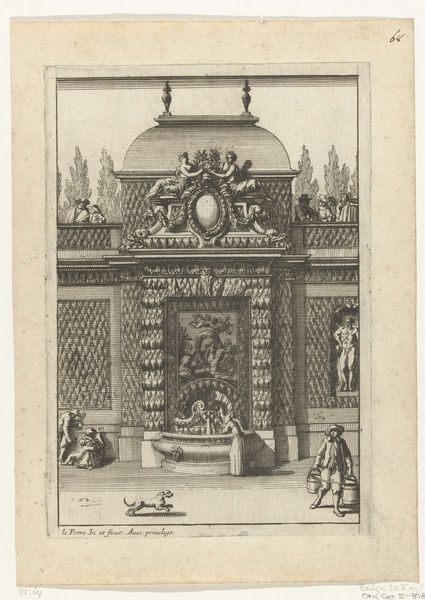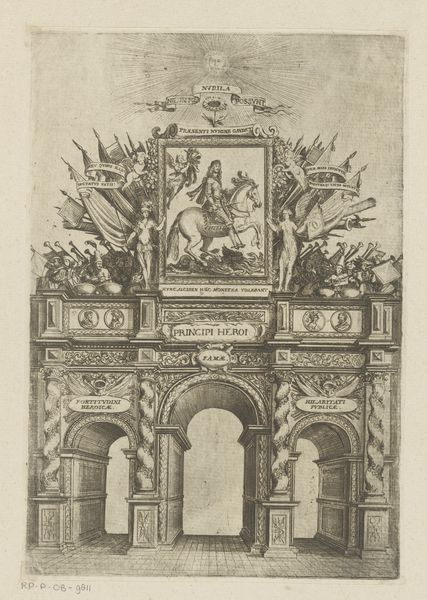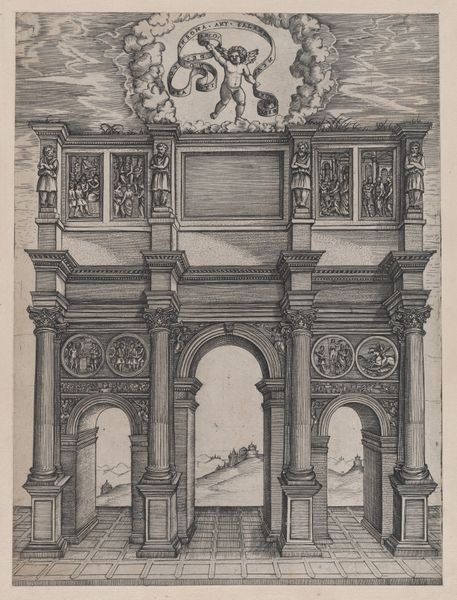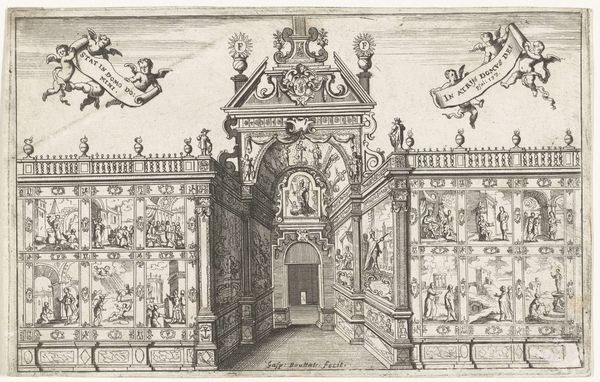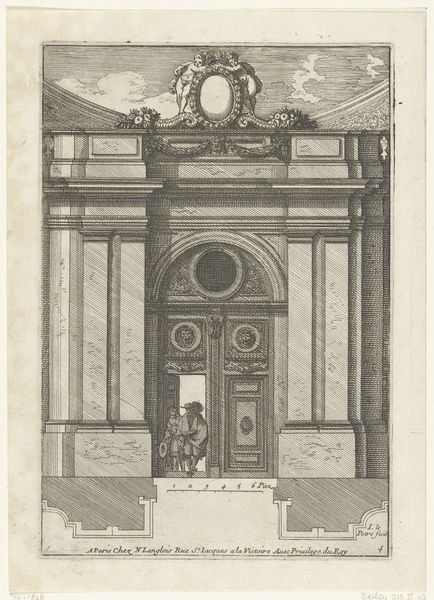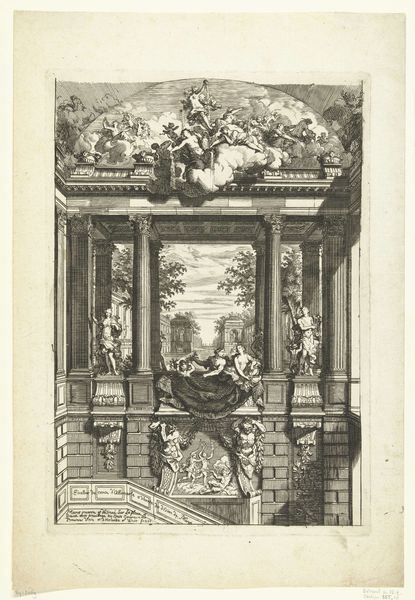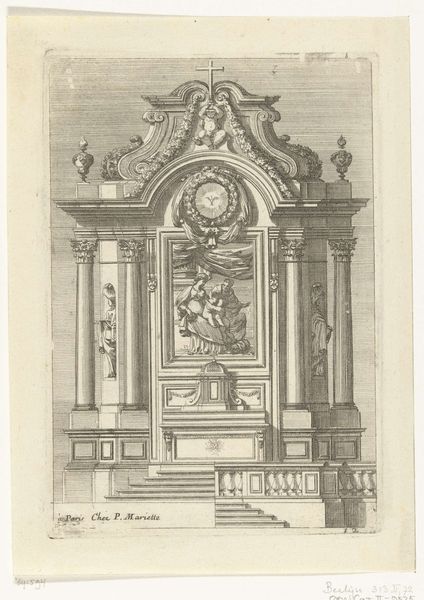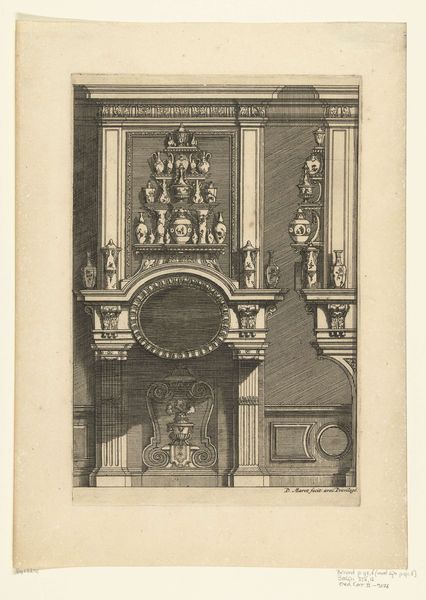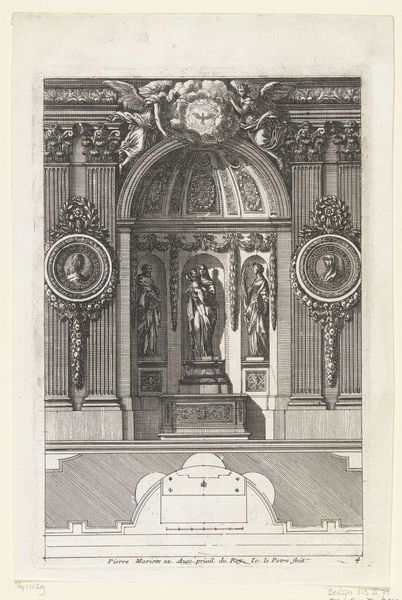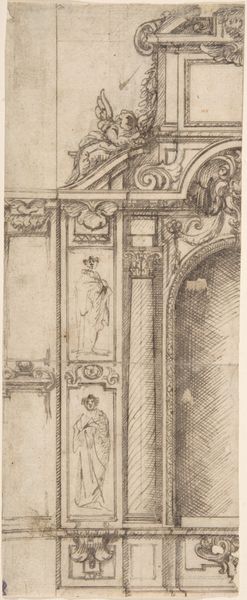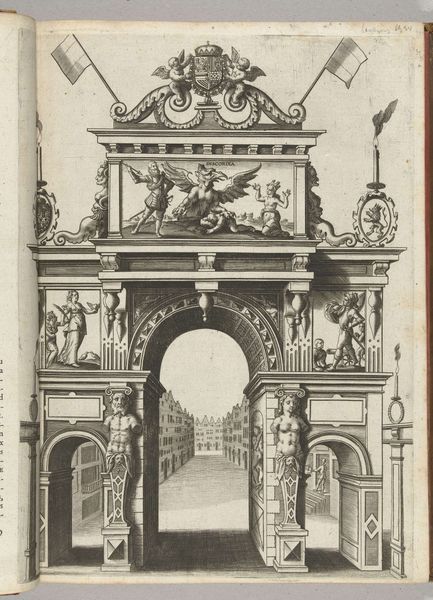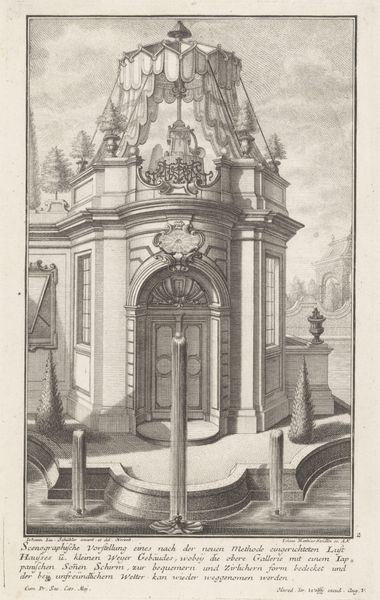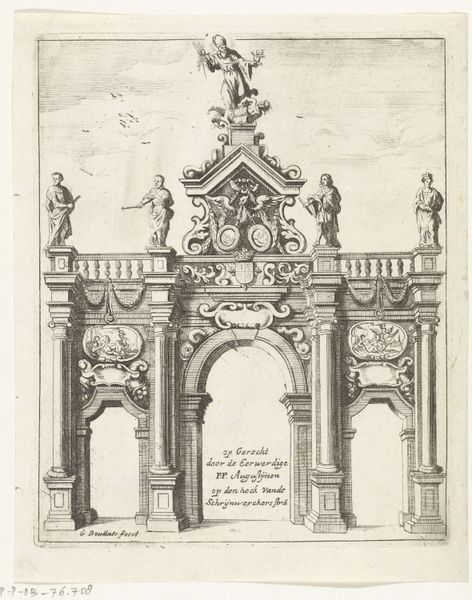
Triomfpoort opgericht door de bisschop van Antwerpen voor de Onze-Lieve-Vrouwekathedraal, 1685 1685
0:00
0:00
gasparbouttats
Rijksmuseum
print, engraving, architecture
#
baroque
# print
#
cityscape
#
engraving
#
architecture
Dimensions: height 171 mm, width 138 mm
Copyright: Rijks Museum: Open Domain
Curator: Let’s take a look at “Triumph Gate Erected by the Bishop of Antwerp for the Cathedral of Our Lady," an engraving dating back to 1685 by Gaspar Bouttats. This piece is part of the Rijksmuseum collection. Editor: It’s stunning. Immediately, I'm struck by the contrast between the sharp architectural lines and the swirling heavens. The stark monochrome intensifies the drama, don't you think? Curator: Absolutely. Beyond the aesthetics, the triumphal arch is rich in symbolic meaning. In that period, such structures weren’t just architectural feats. Editor: Yes, I see how it frames a clear path inwards to a sanctuary, with these repetitive doorframes each receding deeper. What an effective illusionistic tool that the artist can make space so tangible using just a single level of the material. Curator: Precisely! This symbolizes passage into a higher state of being or acceptance into a new community, often under the auspices of religious authority. The arch, funded by the Bishop of Antwerp, signifies not only his power, but also the Church's. Editor: The details packed into this space also really show. On either side of the main structure, several circular icons almost resemble the stations of a cross. How intentional might these visual connections have been intended in the cultural period? Curator: Very intentional! The imagery—the coat of arms, the inscriptions, even the placement of the globe above the archway—all communicate a complex narrative about power, faith, and earthly dominion under divine providence. Note how everything is oriented to focus toward that interior centerpoint with the lone female figure. It presents a complete microcosm. Editor: So, the structure functions almost as a propaganda piece, a public declaration of religious power and authority. This artwork’s complex interplay between form and symbolism highlights its effectiveness as both an artistic and historical artifact. Thanks for providing such clarifying historical details on that layered architectural interior! Curator: It's always fascinating to see how artists of the time used architecture to broadcast profound ideological messages. The symbolism woven into every arch, every detail tells such a compelling story!
Comments
No comments
Be the first to comment and join the conversation on the ultimate creative platform.
